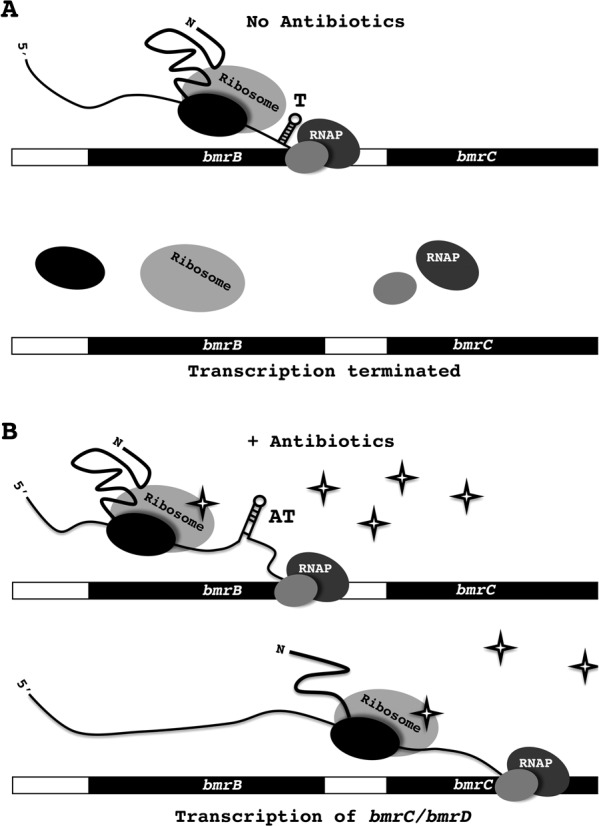Figure 9.

Model for antibiotic-induced bmrCD expression. Due to transcriptional and translational coupling, the RNA polymerase transcribing the bmrB gene is closely followed by the respective ribosome-mRNA-BmrB nascent chain complex. A. In the absence of ribosome-targeted antibiotics, the ribosome can translate the bmrB transcript without impediments. When bmrB is efficiently translated the formation of an anti-terminator structure, which is energetically less favorable than the terminator structure (Figure 1C), is prevented. Consequently, this will result in formation of the terminator structure (T), which will, by destabilizing the transcriptional elongation complex, result in transcriptional termination. B. The presence of antibiotics, such as lincomycin (indicated as stars), which target the bacterial ribosome, will reduce the translation rate of bmrB. This will allow formation of the anti-terminator (AT) structure and, thereby, preclude formation of the transcriptional terminator. In turn, this will allow the RNA polymerase to continue transcription of bmrCD.
